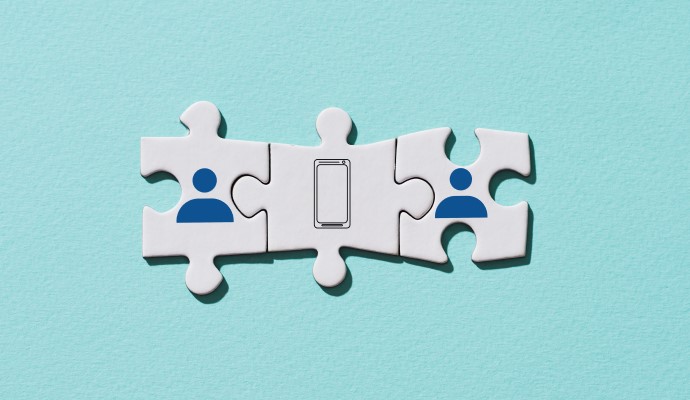Modernizing Claims Payment to Improve Member Experience
Electronic claims payment adoption is key to delivering a modernized member experience that provides simplified, electronic communications about costs and benefits across providers.

Source: Getty Images
- Paper checks and other forms of manual claim payments not only create friction between payers and providers, but also with the one stakeholder at the center of the whole experience: the member. Member experience is only made worse when payers couple manual payments with other forms of paper-based communications, such as explanation of benefits (EOB) and remittance advice.
Delivering an optimal member experience is key to payer success. Modernizing processes may be what payers need to unlock that door. A recent survey found that payers offering consistent digital member experience services (e.g., digital self-service channels) saw higher member satisfaction and steady benefits, including increased enrollment and decreased turnover.
Yet, many payers are failing to modernize payments, with an overwhelming majority of providers still receiving paper checks from at least some of their payers. That outdated approach to claims payment is also extending to the member experience. As HealthPayerIntelligence reports, 71 percent of members said shorter call center hold times would improve their engagement with health plans. More than half also said they wanted service representatives to have their information upfront when calling. Implementing electronic claims payments improves speed and accuracy of payments, which can drive down support call and reduce the time on call for those who do call.
Paper checks impact member experience
Manual claims payment is a major source of call center and customer service issues, explains Leah Silver, Senior Director of Business Solutions at Zelis.
“We know they're slow to process,” Silver states. “It requires manual work and reconciliation for the providers to be able to post and it's error prone.”
In most cases, the manual claims payment process slows the entire member experience. Payers have to send checks to providers—about 90 percent of providers receive some form of paper-based reimbursement from payers, Silver reports—and providers must receive those payments and upload them to their systems before billing the patient. This leaves members waiting to pay their financial responsibility for care and oftentimes, with questions about their medical bills. In a worst-case scenario, paper checks never make it to the provider or fail to be reconciled by provider systems and patients get balance billed for services they shouldn’t have to pay so much for.
Electronic claims payment adoption is key to accelerating the payment process, which can ultimately improve the member experience.
“When you speed up the provider experience from a payments perspective, you ultimately gain a clearer point of view from the member,” Silver explains. “Stats show today, the provider sends one bill to a member on average of 2.9 times before they actually pay. If I'm a provider receiving paper-based payment and it gets lost in the mail several times, I might have to call into the payer organizations and there's a cutoff window in which I am going to start to bill the member for services.”
Electronic claims payment boosts compliance, experience
Switching from paper checks to electronic claims payment ensures less balance billing, which improves member experience and puts payers and providers at less risk when new federal regulations take effect starting in 2022.
Congress passed the No Surprises Act (NSA) in December 2020 to address the issue of surprise billing. Surprise billing most often occurs when a member or patient receives a bill for medical services received at an in-network facility but done by an out-of-network provider. Providers usually balance bill patients when this situation occurs, typically resulting in large, unexpected medical bills.
NSA bans these types of bills in most circumstances. To prevent them from occurring in the first place, federal regulation implementing the law also requires payers to send advanced EOBs when a provider notifies the payer that a member is scheduled for healthcare services and a good faith estimate has been provided. Payers must then send members the advanced EOB, which explains whether the provider is within their network, the contracted rate for the service or services scheduled, and the good faith estimate of out-of-pocket costs.
Payers are still waiting on more details about the advanced EOB requirements but should start preparing now to comply with the forthcoming regulations.
Leveraging technology to streamline member experience
Electronic claims payment coupled with automation of claims communications makes compliance easier for payers while delivering the information members need to manage their financial responsibility. Payers should strive to deliver a single source for plan information, such as deductibles and co-pays, as well as cost estimates in both digital and print manners for members.
A multi-modal or integrated platform for electronic claims payment and communication can also consolidate data from various providers enrolled in the electronic offerings to give members information they need in the simplest format possible. This type of solution provides a single place for provider partners to enroll in electronic payments, reducing the patchwork of manual processes currently in place.
“You can realize efficiencies and innovation as it relates to making claims communications to members clearer, ensuring that they understand what they're responsible for and giving them the ability to manage their payments to providers in a single-source solution,” Silver says. “It’s really bridging the gap between the payer, provider, and member, and ultimately, that ensures that the member, who should always be at the core of healthcare, has a better, more seamless experience.”
Members should be at the center of every transaction in healthcare. Yet manual claims payment gets in the way of delivering a consumer-centric, seamless experience for members. Paper checks bog down the healthcare journey, leading to confusion among both providers and members. Electronic claims payment solutions are key to streamlining the overall experience and bringing all the information together to provide an experience the payer, provider, and most importantly, the member wants.
